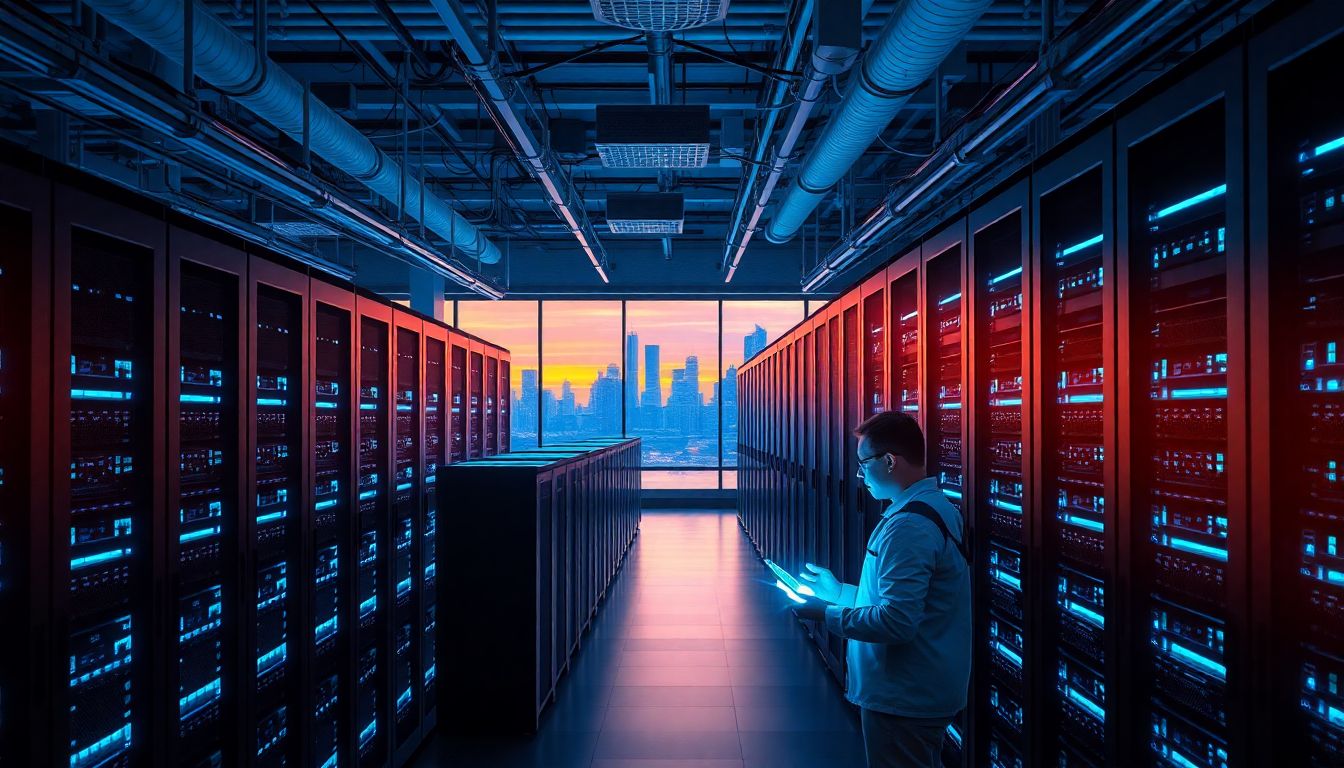Introduction
The world sees data like never before. Every click, upload, or stream adds to a massive amount of information stored in data centers. As the demand for cloud services, artificial intelligence (AI), 5G, and the Internet of Things (IoT) explodes, so does the need for more data centers. This huge growth is changing how we build and design these crucial facilities. Companies are now adopting smarter, greener, and more flexible methods to keep up. Understanding these fresh trends is key for everyone involved—whether you’re an investor, developer, or industry stakeholder. The future of data storage relies on innovation and sustainable practices driven by this building boom.
The Surge in Data Center Construction: Drivers and Trends
Global Growth in Data Center Capacity
Around the world, data centers are popping up at a rapid pace. Countries with large populations and fast-moving tech sectors see constant new builds. The explosion of data has made existing centers crowded, forcing companies to expand. For example, the number of hyperscale data centers owned by giants like Amazon, Google, and Microsoft grows every year. Colocation facilities, where multiple businesses share space, also see high demand, fueling a global infrastructure surge.
Factors Accelerating Construction
Why are data centers being built so fast now? Cloud services empower companies to run their apps and store data remotely. This shift pushes infrastructure closer to customers, sparking edge computing—smaller data centers near cities or rural areas. Digital transformation across industries also adds to the rush. Companies want faster access, lower latency, and more storage, all driving new data center projects.
Impact of Technological Innovations
What role do tech advances play? AI and automation make construction faster and more precise. Robots help build faster and reduce errors. Modular and prefabricated designs are changing how data centers go up. Instead of building everything on-site, companies now assemble pre-made modules, saving time and money. These innovations let projects happen at record speeds, meeting demand without delay.
Innovative Design Strategies Shaping Modern Data Centers
Sustainability and Green Building Practices
Environmental responsibility matters. Data centers are now shifting to renewable energy sources like solar and wind. Solar panels on roofs and wind turbines reduce dependence on fossil fuels. Energy-efficient cooling methods also cut power use. Liquid cooling and free cooling techniques let centers operate with less energy. Google’s data centers lead the way, investing heavily in green efforts and showing what’s possible for the industry.
Modular and Containerized Data Centers
Flexibility is crucial. Modular design allows you to add capacity easily as needs grow. Containers are compact units with everything needed to run a mini data center inside. They can be deployed quickly in remote locations or tight spaces. Major companies use these containerized setups for quick expansion or disaster recovery, giving them a competitive edge.
Advanced Power and Cooling Systems
Keeping data centers running smoothly requires reliable power and cooling. Battery energy storage helps stabilize power supply and handle outages. Hybrid solutions combine backup generators with renewable power sources. Cooling innovations like immersive cooling—where servers are submerged in a special liquid—and aisle containment help reduce heat and save energy, making centers more efficient and eco-friendly.
Cybersecurity and Resilience in Design
Data centers have to be tough. Physical security—like biometric access and surveillance—protects servers from threats. Cybersecurity measures guard against hacking and data theft. Plus, designing centers for disaster recovery ensures they stay working during floods, earthquakes, or power failures. Resilient centers keep information safe and operations smooth.
Construction Innovations Propelled by the Data Center Boom
Use of Prefabrication and Modular Construction Techniques
Time is money. Prefabrication speeds up building by assembling parts in factories first. Once ready, modules are transported and assembled on-site. This approach reduces construction time, cuts costs, and improves quality. Several successful projects worldwide show how prefabrication can fast-track data center creation without sacrificing standards.
Sustainable Materials and Building Technologies
Eco-friendly materials are replacing traditional ones. Recycled steel, low-emission concrete, and insulated panels lower the environmental impact. Building automation systems and IoT devices monitor energy use and equipment health in real-time. These smart technologies make maintenance easier and enhance energy efficiency, saving money and reducing emissions.
Workforce and Automation in Construction
Robots and AI-driven tools are transforming construction sites. Drones inspect hard-to-reach areas, improving safety and accuracy. Automated machinery speeds up tasks like excavation and installation. Workers now require skills in robotics and data management, boosting productivity and safety across projects.
Future Outlook: Trends and Challenges
Emerging Technologies and Innovations
In the future, AI will continue to optimize designs and predict maintenance needs before problems happen. Drones and robotics will grow more common for quick inspections and repairs. These tools will help keep data centers running smoothly and cut down on downtime.
Regulatory and Environmental Challenges
Building in different locations means navigating zoning laws and environmental rules. As data centers consume a lot of energy, public concern about their carbon footprint grows. Companies will need to find smart ways to meet regulations while staying sustainable.
Strategic Implications for Stakeholders
Investors see data centers as promising assets because demand keeps climbing. Partnerships between technology providers, construction firms, and energy companies will foster more innovation. Staying ahead requires embracing modular, green, and automated building methods.
Conclusion
The data center boom is fueling major changes in construction and design. From sustainable materials to modular building methods, this growth pushes the industry forward. Embracing innovation means faster builds, greener operations, and smarter security. Staying flexible and adopting new technologies will help meet future demand. If you’re involved in this sector, now’s the time to focus on sustainability, automation, and smart planning. The future belongs to those who build smarter today.
